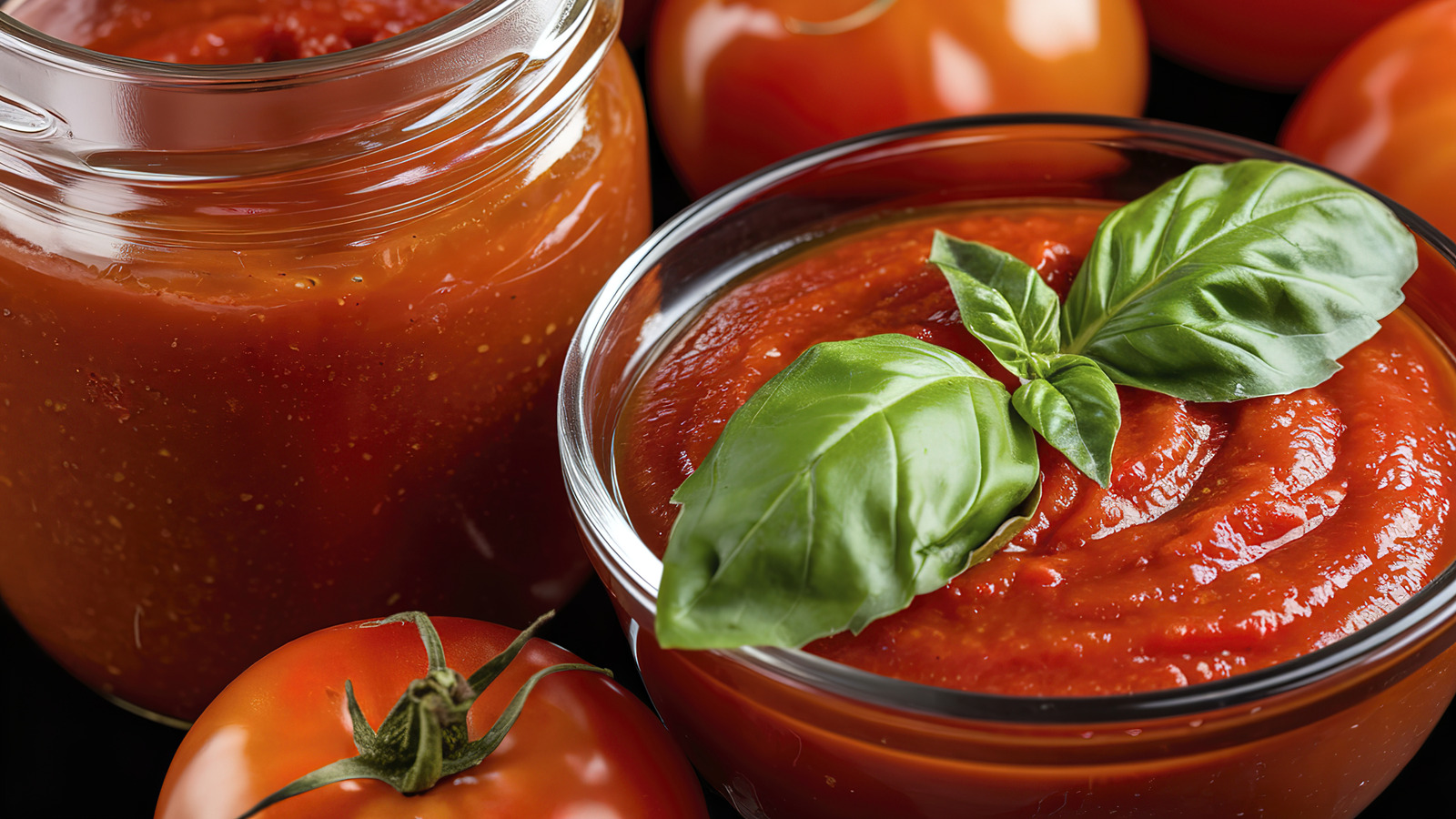We may receive a commission on purchases made from links.
Not everyone has the time to simmer homemade tomato sauce from scratch, and that’s totally fine — we all have our reasons. Your pasta dinner can still be saved by a quick grocery run to pick up a jar of tomato sauce. But if you’ve ever tasted homemade, you might notice that the store-bought version is missing a bit of something, making it taste flatter and less vibrant than your small-batch tomato passata. Well, your taste buds aren’t tricking you. It turns out that something is indeed missing: herbs.
Herbs play a big role in building the homey, organic flavor of at-home tomato sauces. Take our quick tomato sauce recipe as an example. Even after trimming down the ingredients list to make as simple and fast-cooking a version as possible, we still included a teaspoon of dry basil. Canned tomato sauces, like this 365 by Whole Foods Organic Tomato Sauce, usually aren’t herbed, which is the exact reason why it tastes a bit off.
But think of this as an opportunity. Since you’re starting with essentially a blank canvas of just tomato purée and seasonings, you’re free to tailor your sauce with whatever herbs speak to you. And boy, there’s a lot to talk about here — the list of potential herbs you can add is long, and each will give you a totally unique tasting experience.
Great herbs to flavor your homemade tomato sauce
For this job, basil is your safest bet. Its sweet, slightly spice-laced flavor is more or less made to go with the tomatoes by balancing out the acidity. If you’re worried about messing up, start here. You definitely can’t go wrong with it.
Outside of basil, play around with other Mediterranean herbs in your tomato sauce. Think oregano with its warm, earthy kick to bring your tomato sauce to marinara territory. Or thyme, that, while having a subtler profile than oregano, can give your sauce incredible depth thanks to its savoriness that rivals even cloves. And lastly, there’s rosemary (yes, these are good for things other than herbing a pan-seared steak). The pungent pine resin-esque scent would give your tomato sauce a brand new layer of flavor that can turn heartier recipes like a rich turkey tomato bolognese into real flavor-fests.
You’re not stuck with Italian classics, however. Try adding a single bay leaf, for instance, to a fresh can of tomato sauce for an extra-minty note to go with the usual brightness of the tomato. You can also play with fresh sage if you like your tomato sauce on the woodsy side (actually, try pairing sage with rosemary in your tomato sauce for a herby flavor super-boost). Our last words are this: Don’t be afraid to experiment and throw in a bit of this and a bit of that each time you try this trick. Once you’ve figured out the perfect blend of herbs that’s to your taste, every can of store-bought tomato sauce will feel close to homemade.






